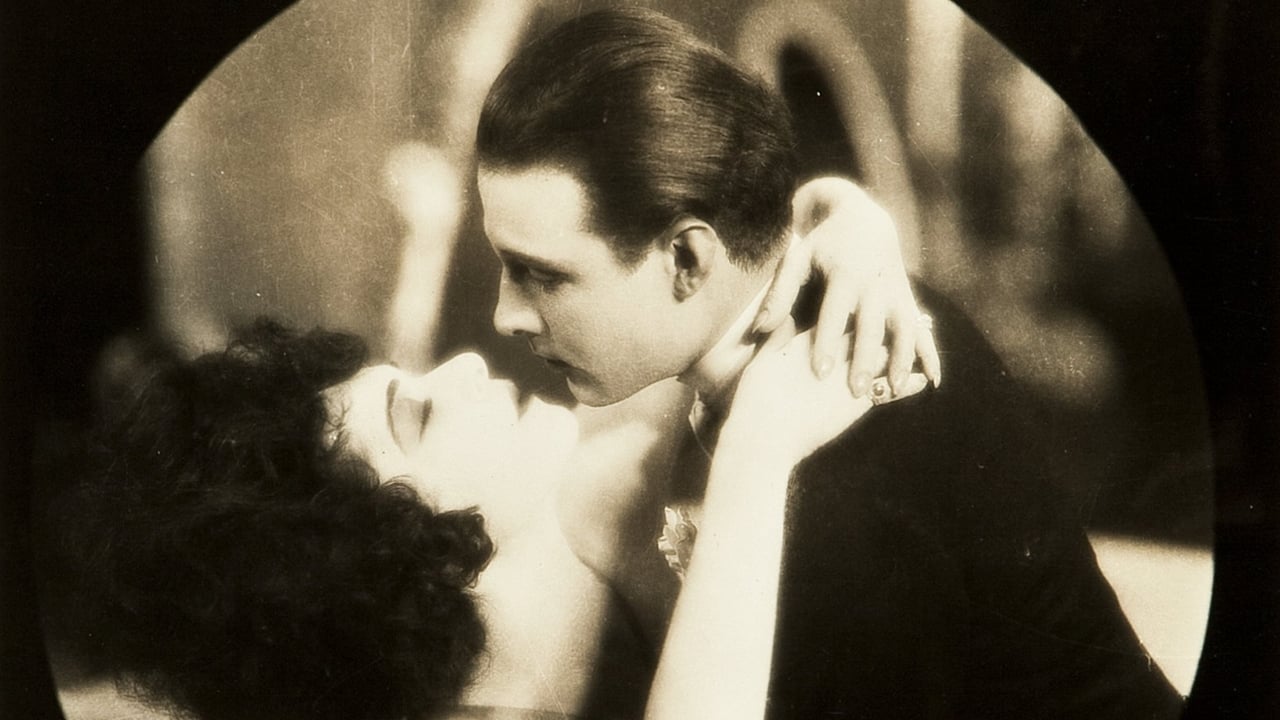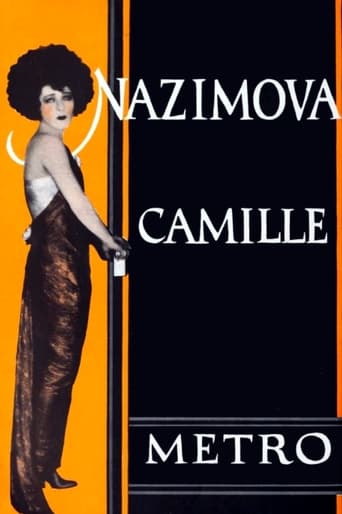

SERIOUSLY. This is what the crap Hollywood still puts out?
... View MorePlot so thin, it passes unnoticed.
... View MoreFantastic!
... View MoreOne of the film's great tricks is that, for a time, you think it will go down a rabbit hole of unrealistic glorification.
... View MoreCamille (1921)I stumbled on a great clean copy of this packaged with the more famous Garbo talkie version from 1936, and it was interesting mostly as a comparison. Here for the first time I got to study the famous Rudolph Valentino (the "matinee idol" of the period). And in the leading role as the modernized Camille was Alla Nazimova, a Russian actress with serious aspirations and some success in the era.The film is a stubborn one to like, however. While not badly made, it has the stiff and sometimes plodding editing, scene to scene, that implies an audience that might not keep up with a more sophisticated treatment. (And more complex editing was common by 1921, for sure.) The acting, silent as it is, is false enough often enough to push a modern viewer off. Nazimova has this fabulous and distracting giant hairpiece on, for some reason, as if to show she's truly wild, but her acting is almost too serious for the fun she is meant to inspire.The set design is a wonder in many ways, having a modern flair that precedes Art Deco and might interest fans of that mid-20s style. The camera, however, is often satisfied to center the scene and sit and watch the events. Bitzer (with Griffith) knew the dangers of this years earlier, and little known director Ray Smallwood is clearly not making the most of some very dramatic moments.The story, in brief, is about a spirited young woman who is at the age where she must marry to survive, and she falls between a rich, dull count and a handsome, adorable common person (Valentino). What plays out is something very unfamiliar to Western women in our era, because the main woman (who is called Marguerite) is trapped by really needing a man to support her, period. True love with a relatively poor chap just won't do, and yet of course true love is true love, and Valentino promises to support her one way or another. But his (of all people) father interferes and and basically dashes true love on the rocks.The end is unremittingly tragic, the camera again centered on the final scene.See it? No, I'd so not, unless you have some deep interest in either the story or one of the main actors. The plot is based on a Dumas classic from 1848, and is most famous for having inspired the great opera, La Traviata. If you want a quite good movie on these events, see the Garbo version.
... View MoreAbsolute masterpiece of style! Actors: Very effective type of acting with minimum movements of characters in manner like sculptures which come to life(matador's gesture of Valentino with up hands when he wants to kill his sweetheart at last them meeting - for example).See this influence in acting even in avant-garde films of Kenneth Anger. Decorations:Clothes and decorations with Art Deco for more romantic and impression.Scenario: Simple and correct (in Shakespire's manner).Love in Spring,Death at Winter... Direction: As good as it's possible.Because punctual and accurate sets maximum style for this king-size drama.
... View MoreAlthough the 1921 silent version of "Camille" will not eclipse the later Garbo vehicle, the earlier film is an unexpectedly entertaining movie in its own right. The Dumas story was updated to the post World War I era and starred Alla Nazimova as the tragic Lady of the Camellias. Physically, Nazimova fails to convince viewers that she could lure young men into her clutches or coax a rich suitor to cross her palm with a jewel for her favors. However, she plays Camille in the grand style of the era, and, had she lived, she would have been a fine Norma Desmond in "Sunset Boulevard." Two years after "Camille," the 44-year-old Nazimova played the teen-aged "Salome," the role that Norma Desmond wrote for herself as a comeback vehicle. The Nazimova version offers a glimpse of what the Norma Desmond film might have been.As in "Salome," Nazimova's hair, costumes, and gestures in "Camille" compensate for her lack of physical allure, and the audience eventually accepts that a Rudolph Valentino would succumb to her charms. However, Valentino, does not register here either physically or emotionally with the appeal that he would exhibit in later films.Natacha Rambova, who was Mrs. Valentino, designed the costumes and sets, which often add a striking dimension to the film. The unusual designs are reminiscent of the Aubrey-Beardsley-inspired work on Nazimova's "Salome." Although the overall direction of "Camille" is competent, if not exciting, the story is well paced. While certainly not an example of the silent cinema at its artistic peak or even a typical commercial film of the era, "Camille" offers a star turn by one of the era's more eccentric actresses and an early look at one of the great male stars of the 1920's.
... View MoreValentino was still something of an unknown quantity when this film was made, and although it was adapted from the screen by his mentor June Mathis and designed by his wife Natasha Rambova, CAMILLE is not a Valentino film. It belongs instead to Alla Nazimova, whose eccentric charm that combined both frantic gaiety and an exhausted world-weariness made her the most highly regarded "high-art" performer of her day.Surely by now every one knows at least the basic outline of the story, which French author Dumas drew from life: Marguerite Gautier (Nazimova) is a celebrated courtesan who despises her life and yet cannot break free of it. When confronted with true love in the form of society youth Armand (Valentino), however, she attempts to leave her past behind--only to be convinced by her lover's father that if she really loves Armand she must leave him that he might take his rightful place in society. She returns to her old life, where she dies of consumption with her one true love's name upon her lips.Nazimova, who is credited with introducing the Russian "method" to the New York stage, is an extremely interesting Camille. Unlike the later Garbo, she offers us a truly neurotic creature who in public screams with nervous energy--and then in private collapses under the twin weights of self-loathing and her increasing illness. At times her performance goes as far over the top as her hairstyle, but the cumulative result is exceptionally affecting. Valentino is typically Valentino, with an intriguing presence that relies more upon appearance than actual skill, and his performance adds no significant dimension to the part of Armand; this may, however, be an unfair criticism, for the role is notoriously thankless.Rambova's strange set design for Marguerite's apartment is a highlight of the film and worth studying, very 1920s modern and yet still far advanced of anything commonly seen in even contemporary decor, and the cinematography gives CAMILLE an effectively lyrical feel. All in all, the film might best be considered as a high-art experiment that does not entirely come off, but even so it gives us the opportunity to see Nazimov near the height of her appeal, and as such is recommended to all silent film fans.Gary F. Taylor, aka GFT, Amazon Reviewer
... View More